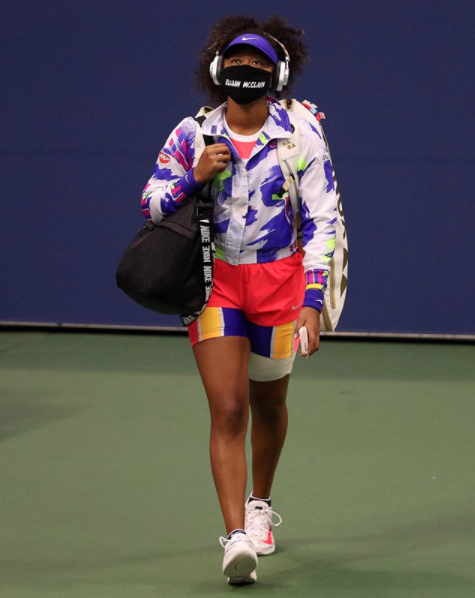Naomi Osaka: Adversity Creates Opportunity
7 Matches. 7 Masks. 7 Names.
Naomi Osaka made an immense impact on the tennis world at the 2020 U.S. Open by fighting for each point on the court, and for racial injustices off the court. Already a two-time major champion facing intense media scrutiny in the first major tournament returning from the COVID-19 halted tour, Osaka took it upon herself to bring awareness on the biggest stage.
Of course, this wasn’t a first time thing for Osaka. She has long been an athlete and a voice that was not confined to traditional appearances and talking points. Born in Japan to a Haitian father and a Japanese mother, Osaka’s journey in professional tennis looked much different than her counterparts.
“I’ve never really fit into one description—but people are so fast to give me a label,” Osaka wrote in Esquire Magazine. “ Is she Japanese? American? Haitian? Black? Asian? Well, I’m all of these things together at the same time.”
What makes Osaka unique goes far beyond her racial and ethnic background; she is a self-proclaimed introvert and often comes off as reserved and shy, if not socially awkward. So how did she go from an introvert to become such a strong athlete-activist? The pandemic this spring made Osaka deal with the challenge head on.
“For me, I have a lot of regrets before I go to sleep, and most of the regret is that I don’t speak out about what I’m thinking,” Osaka said. “There’s a lot of times where I see myself in situations where I could have put my input in, but instead I’ve held my tongue and things kept moving in a way that I didn’t really enjoy.”

“I felt a call to action. Enough was enough.”
Osaka used the free time off from the tour to not only find her voice, but to use it. After George Floyd was killed at the hands of police in Minneapolis, she knew that it was no longer time to stay silent.
“I felt a call to action,” Osaka wrote. “Enough was finally enough. I flew to Minneapolis with my boyfriend days after the murder to pay our respects and have our voices heard on the streets. We grieved with the people of St. Paul and protested peacefully.”

Shortly thereafter, the ATP and WTA tours returned to action in the leadup to the U.S. Open. At the Western and Southern Open, which was also played in New York, Osaka withdrew from her semifinal match to raise awareness after the shooting of Jacob Blake in Wisconsin. That move led to the tournament postponing all matches that day in an act of solidarity.
Finally, the U.S. Open. Osaka wore masks with the names of seven different people of color who had died at the hands of police. She was put on the spot every day to talk about her purpose. She did all of that while playing some of the best tennis of her career. Once again, she faced adversity. Of her seven matches, four went three sets, including the final against Victoria Azarenka. Once again, she came back, and captured the title.
Osaka has been named one of Time Magazine’s 100 most influential people for two years in a row, a far cry from the former shy and reserved young star. What Osaka has shown everyone is that you can become so much stronger when you face adversity, and to never be afraid to speak your mind. There’s no doubt that she has made a huge impact on the current tennis world, and on the tennis stars of tomorrow.
Did we mention she’s only 23 years old? Having built one of the largest platforms in all of sports, there’s no doubt that Osaka’s journey is only just beginning.